Happy New Year of the Horse!
I hope it’ll be a successful one for all of you
– without working like a horse! 😉

A European's move towards Japan
Happy New Year of the Horse!
I hope it’ll be a successful one for all of you
– without working like a horse! 😉

Merry Christmas Everyone!

Last Friday, I was invited to the press preview of the 118th Nitten, one if not the largest exhibition of contemporary Japanese artists. It is a touring exhibition where each stop features about 50% local artists, in this case from Kyoto and Shiga prefectures.
The Nitten comprises five art faculties; namely Japanese Style and Western Style Painting, Sculpture, Craft as Art and Calligraphy. Each of the departments features works of the great masters of the modern Japanese art world alongside the works of new talents. At the press preview, each section was introduced by one of those great masters (I believe) but since the whole preview was limited to one hour, there was not enough time to really appreciate the whole exhibition.
In any case, here are a few of my personal favourites from this Nitten exhibition.
This one is a nihonga – Japanese painting called “Ray of Light”, and on closer inspection it’s red leaves in a forest.
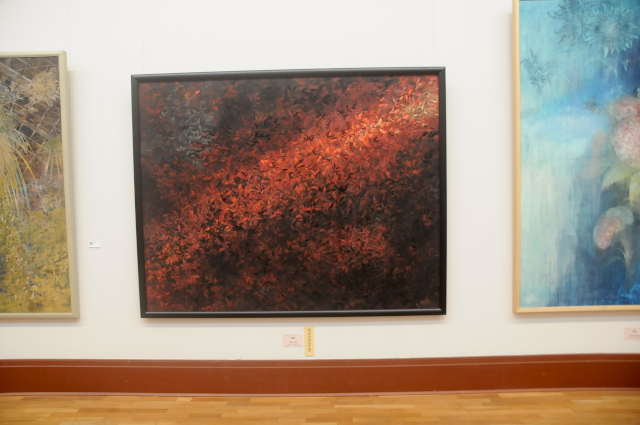
This one is another nihonga, it looks quite abstract on first glance, but it isn’t. I would call it wabi-sabi.
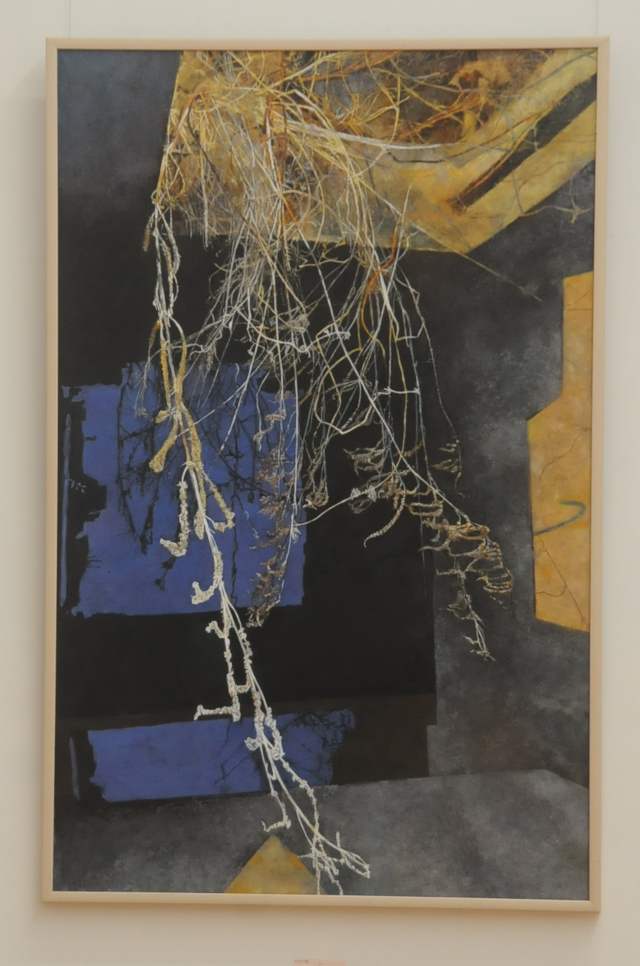
The next images are from the “Crafts as Arts” section. My favourites were the lacquer pieces, but thanks to their shiny black surface they are incredibly difficult to photograph. Hence just an overview. The pieces on the wall are not paintings, but textiles, either woven or in yuzen-dyeing.
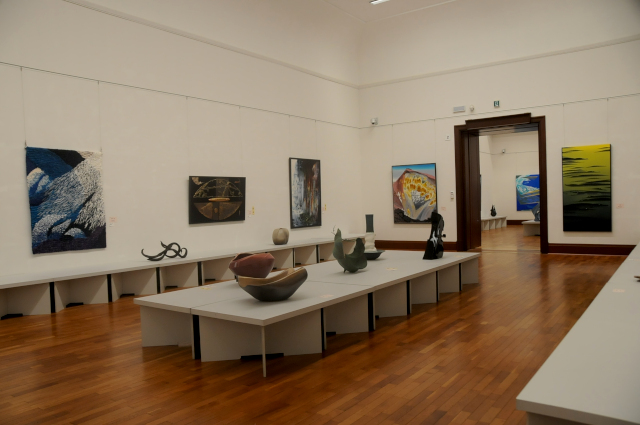
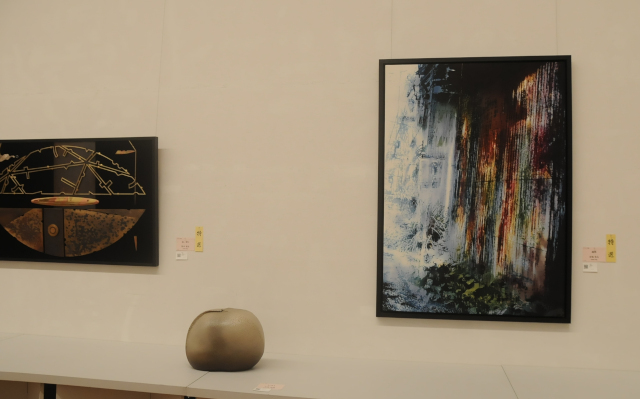
My favourite part are always the sculptures. I remember the very first Nitten I want to, where about 90% of the exhibits were nude females standing like soldiers, looking straight ahead. I was so disappointed – what a waste of medium! However, things have improved considerably as you can see, I wonder if the people who choose the art have changed.
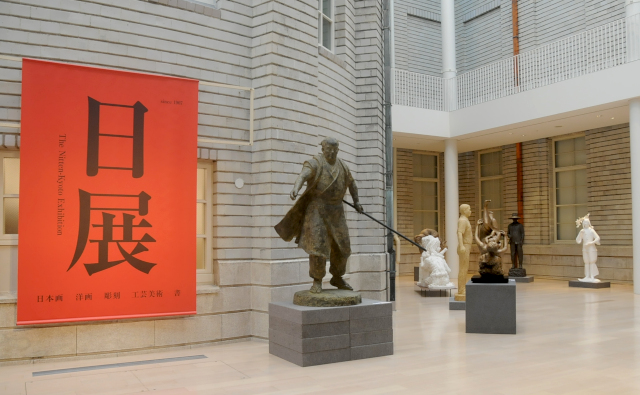
This was my favourite piece of the whole exhibition. She looks defiant and confident in herself, yet sensual at the same time. As with most of the art that I like I can’t really say why exacly I like her. Apparently the piece is called “Dusk”.

And here are yoga, Western-style paintings. Tokyo Tower stood out to me, a bustling evening scene in the big city with bright colors and lights everywhere.
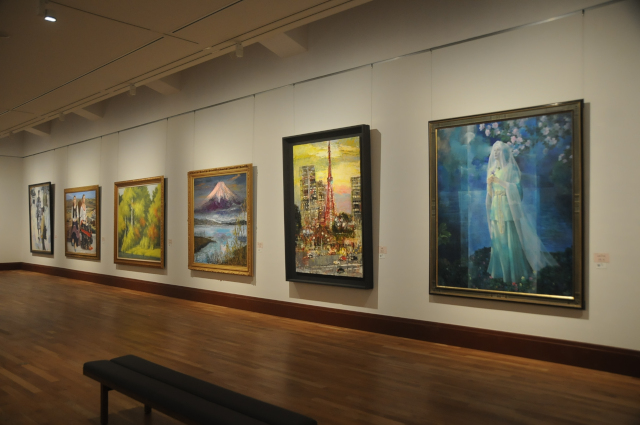
And here is Ojii-san, he comes every year to the exhibition and brings his grandchildren. They are growing up! With the horses in the background, it’s probably a nod to 2026, the Year of the Horse. I’ll have to check the other paintings if there’s a similar theme.

That was the Nitten, the last big exhibition for me this year. This is also the last post before I go on my annual Christmas holiday; I’ll be back on January 7th next year or thereabouts.
As I mentioned in my post on my new visa requirements, there has been a rise in anti-foreigner sentiments throughout Japan. The causes are obviously manifold, and since I’m not super involved in current politics, I would have a hard time getting to the bottom of things.
However, my favourite Japanese comedian/language teacher, Dogen, has recently published two videos on the issue that I’m happy to share here. Both are well worth watching and provide a rather nuanced view on what’s happening right now and why.
The first one goes back to Shinzō Abe’s assassination and the entanglement of a Korean church in Japanese politics.
The second one talks about the new prime minister and the issues she and her party are facing in different parts of the country.
It’s getting colder and colder by the day, and Pumpkin is almost always hiding somewhere warm: In his bed in the living room (where he has a little heating pad), in his bed in the office (which is heated for me too), in my bed upstairs… If he chooses to sleep upstairs, he often cries until I go and tuck him in. This will be important later.
In the evenings around eleven, he does come to me and squeezes himself at the back of my office chair, where he becomes a slightly fluffy, slightly bony, but ever so hot extra cushion. It’s his way of telling me that he wants to go to bed, and my cue to turn on the hot carpet I put underneath my futon. It takes roughly half an hour to heat my bed, and that’s when I go upstairs as well.
And then…. things get complicated. Now that I have closed the office door, Pumpkin has to decide where he wants to sleep – in the living room or upstairs with me. Of course, he’s still cold and now he starts crying again: because the office is closed, because I need to tuck him into his kitty bed, because… I don’t know.
By that time, I’m already in bed, calling out to him while slowly drifting off, and it takes him quite some time to realize that I’m expecting him to settle down or to come upstairs on his own. Which he does, eventually – with a complaining cry when he makes it to my bed, waking me up again… It takes us a while to finally fall asleep.
To be fair, I shouldn’t complain too much. He has now learned to sleep between my thick duvet and the fleece blanket on top of it, and he can manage to slip in there without my help. In other words: At least he’s not waking me up in the middle of the night anymore. Small wins, I guess.
Sen-no-Rikyu (1522–1591) was the most influential of all Japanese tea masters. Not only did he shape tea ceremony as it is practiced today, he was instrumental in the “tea diplomacy” used by his lords Oda Nobunaga and Toyotomi Hideyoshi to unify the country.
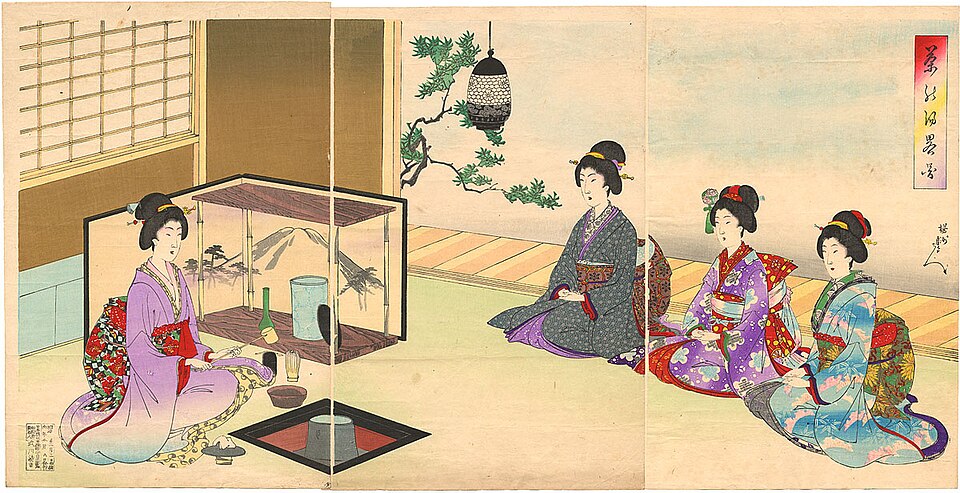
Born into a wealthy merchant’s family in Sakai (south of Osaka), he studied tea ceremony from a young age and eventually stripped it from everything he deemed unnecessary. Rikyu’s emphasis on the simple and the idea that everybody was equal before the tea led him straight to the courts of the leaders of the country at the time.
Influential though he may have been, it left him vulnerable to the whims of the very people he served. For some reason – several have been put forward, but which was the true one has been lost to history – Hideyoshi and Rikyu’s relationship soured in 1591, and in the end, Rikyu was ordered to commit suicide. Rikyu is said to have conducted a final tea ceremony for his closest friends, given them all his prized tea utensils, and then calmly followed his lord’s orders.
This is where The Death of the Tea Master starts, a short biography of Sen-no-Rikyu, his tea ceremony and his times. It is this month’s free article on Yamato, I hope you’ll enjoy it! In the future, I will link the monthly free Yamato article here every first Sunday of the month; you have no obligations to read or subscribe.
It’s been a while… sorry for being so quiet, I’ve been busy setting up a new project. More below.
It’s getting cold in Kyoto, winter has come early: It snowed this morning. I mean, we’re talking about 3.5 snowflakes or thereabouts, but still: snow. Pumpkin has been hiding in bed all day (I wish I could too) and I’m not looking forward to a long and potentially very cold winter.
On the other hand, if it’s too cold to go out, I have plenty of time for my latest project: Yamato Magazine. It’s my new outlet for all things Japanese, with a focus on traditional culture and history.

Currently, there are two posts a week, Tuesdays and Fridays. I’m still trying to figure out a good time to publish, for now it’s in the early evening in Japan, but I’m striving for 19:00. So far, my favourite articles are
The last one is a paid article (a subscription is 7 US$/month, 65 US$/year), but the first two are free to read (freebies every first Friday and third Tuesday). I’m hoping that this will help to earn those 30 million yen that I’ve talked about earlier.
This project has been in the making since this summer. I’ve been thinking of doing something with my passion for writing about Japan that goes beyond this blog for a while. I’ve had several articles published in magazines (the first one above was the start of this), but there doesn’t seem to be a big market for these kinds of historical pieces (or maybe I haven’t found it just yet.)
For now, it’s just me writing these articles, but in the long run I want to approach other writers who may be interested in contributing individual articles or even repeated columns. Who knows where this will lead me – hopefully to staying in Kyoto for good.
Anyway, if you’re interested, have a look around at Yamato Magazine, a free subscription will help with my morale, a paid one also with my finances. Both could do with a boost. Thank you, enjoy!
The new rice harvest has arrived and – the prices are now around 4200 yen and beyond (tax not included). Given the price hikes over the last year, I would have been very surprised if rice had become any cheaper, but still, this is a surprise.
However, there were and still are essentially two options of buying cheaper rice. One of them is Calrose rice, rice imported from California. In all the years I spent in Japan, I have never seen foreign rice sold anywhere (except specialty rice like Basmati or Risotto rice in small quantities), so this is definitely new. Generally, Japanese people don’t buy foreign rice (as the country is self-sufficient) and I have heard that, even though this is marketed as “Japanese rice grown in the US”, it is not really up to scratch for Japanese cuisine. I’m not a gourmet, so I probably wouldn’t notice even if I tried.
The other option is the surplus rice from the government. The first I’ve seen arrived in Kyoto only about two months after the official announcement, but it was sold out so quickly, my supermarket had to opt for the “one bag per household” limit. They reappeared sporadically over summer, and I finally managed to get hold of a 5 kg sack a few weeks ago, for the old price of 1980 yen (plus taxes).
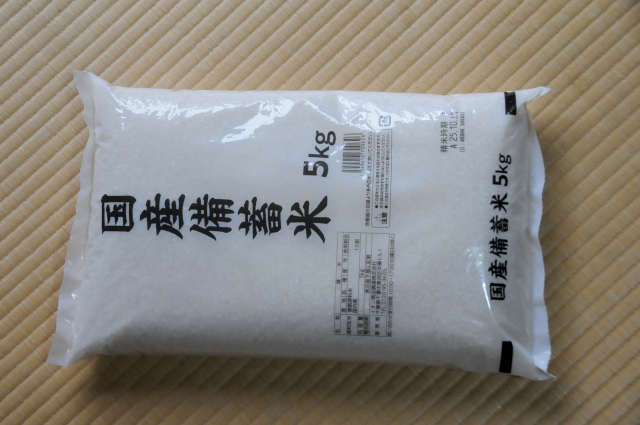
I’m glad that rice is just one of the staple foods I eat, I’ve always been a pasta girl, and potatoes and especially bread are on the menu regularly as well. Therefore, I hope that this sack of rice will last me over winter. I guess by then, the government rice will have sold out, and the prices for conventional rice will stay where they are for good. Oh well, can’t be helped.
Today, I was giving a tour to a lovely Austrian couple. And, all morning, while we were out and about around Kiyomizudera, it was raining. Of course, now that I’m home, it stopped, but it’s too late: I’m wet and cold through and through.
So, no bigger post today, just a hot shower and then off to bed with tea and books. And Pumpkin. Well, he’ll find me on his own.
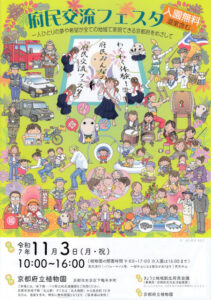
Last week, I got a surprise email from somebody I lived with at Ebisu’s – all the way back when I first moved to Japan. So, we decided to meet up and as Monday was a holiday with a special free event sponsored by Kyoto Prefecture going on in the Botanical Gardens, this is where we went.
It was lovely to reminiscence a little and talk about the old days and what the future might bring too (maybe she’ll be back in Japan soon?) All the while, we were taking in the scenery. I love the Botanical Gardens!
And, I got a lovely present: Chocolates! I’m not a big fan of dark chocolate, it’s too bitter for me in general. However, there is this exception: Le Daniel Chocolates from Rennes. I have no idea what they are doing, but their chocolates are fabulous, super smooth, not bitter at all, and the fillings… absolutely scrumptious!
And for once, I even managed not to eat the whole box in one go. It seems I’m getting better at restraining myself. Finally.